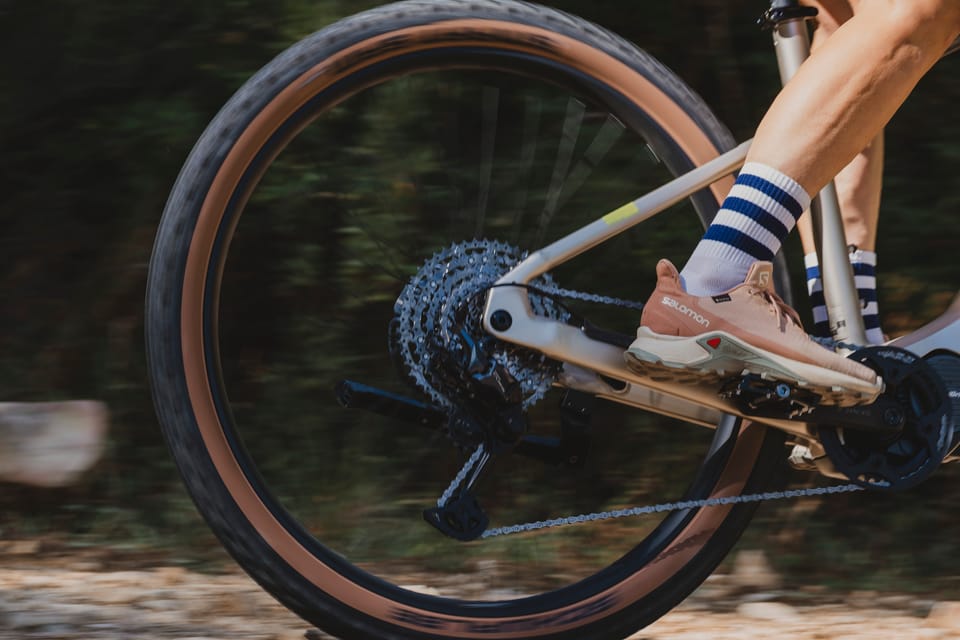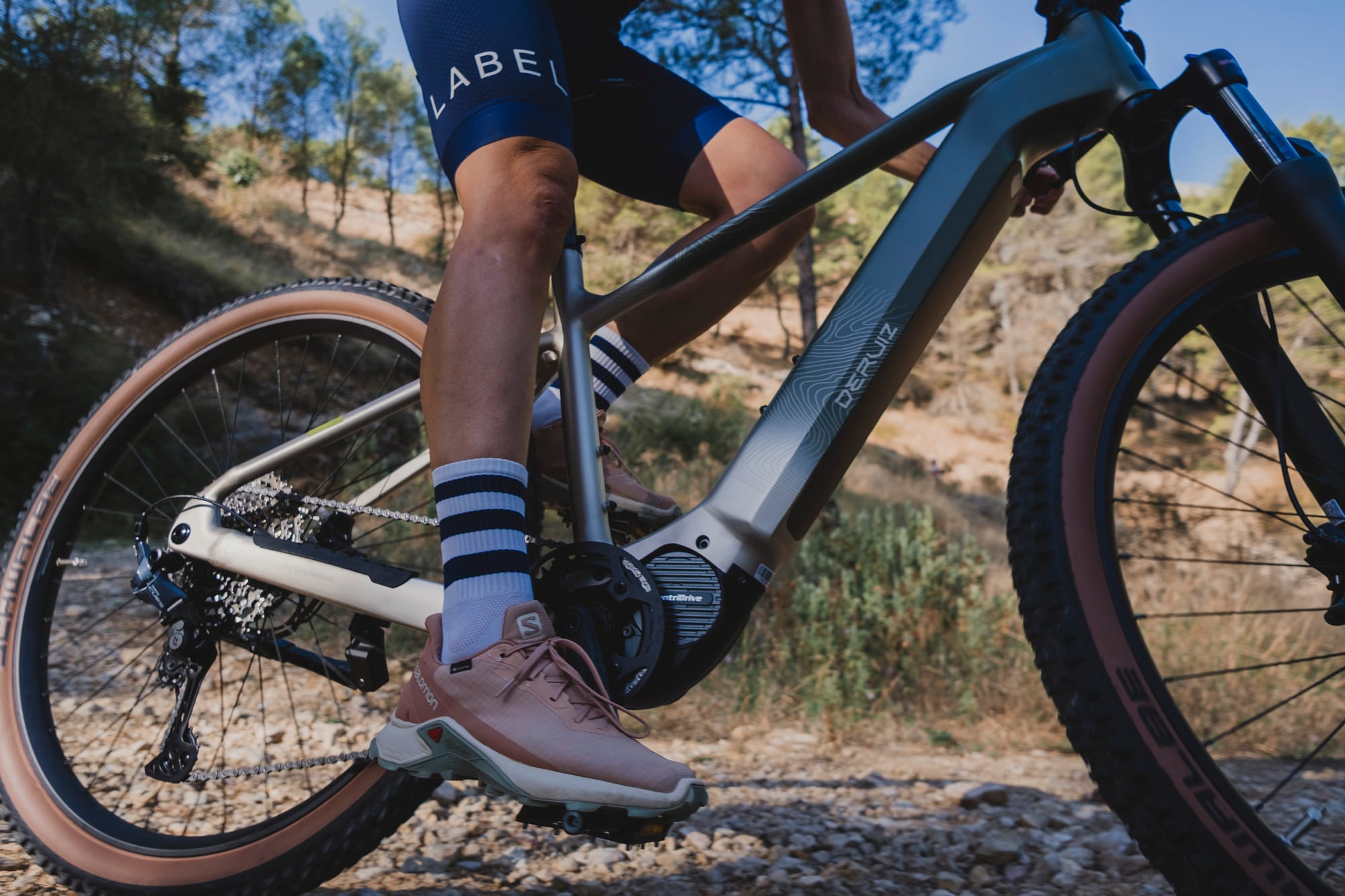Shimano CUES: Redefining Value and Accessibility in Cycling Drivetrains

When Shimano announced CUES (Create Unique Experiences), the idea was bold: a single, unified groupset system that could cover everything from daily commuting to gravel adventures and even e-bikes. It wasn’t just another drivetrain launch. It felt like a reshaping of how riders at the entry and mid-level experience shifting, performance, and long-term durability.
Recently, we had the chance to properly test Shimano CUES on the Deruiz Dolomit e-bike. The Dolomit itself was impressive, but what really struck us was the drivetrain. And honestly? We came away a little blown away.
First Impressions: More Than “Entry-Level”
We went into this test curious but not expecting anything groundbreaking. After all, most “value” groupsets usually come with compromises sluggish shifting, heavy parts, or limited compatibility. But Shimano CUES flips that assumption.
The first ride made this clear. Shifting was crisp, consistent, and remarkably smooth, even under the torque of an e-bike motor pushing us up steep Pyrenean gradients. It didn’t feel like a budget compromise. It felt refined.
CUES uses LINKGLIDE technology, designed specifically for durability under e-bike loads. That means less wear on cassettes and chains, which usually take a beating when you add motor-assisted torque into the mix. For everyday riders, this isn’t just a nice-to-have. It’s huge it means fewer maintenance headaches and a drivetrain that stays in tune longer.

Why CUES Matters
Shimano isn’t just giving us another mid-tier option; they’re tackling something bigger: accessibility.
Cycling has a reputation problem. For new riders, the tech can feel intimidating, fragmented, and expensive. Walk into a bike shop and try explaining the difference between Deore, Alivio, Tiagra, and GRX most riders leave more confused than when they arrived.
CUES simplifies this by replacing 9, 10, and 11-speed mountain, trekking, and urban drivetrains with one ecosystem. That’s a massive shift. It means less confusion, easier upgrades, and a broader path for riders to grow into cycling without hitting dead ends in compatibility.
In short: CUES makes performance feel attainable.

Riding with CUES in the Pyrenees
Testing in the Pyrenees gave us the perfect chance to stress the system. Long climbs, rapid descents, changing weather, and the constant torque from the Dolomit’s motor it was a proper testbed.
What stood out most was the consistency. Whether grinding up extended climbs or rolling through the valleys, shifting felt reliable. No clunky hesitations, no ghost shifts. Even under pressure, CUES responded cleanly.
And while this wasn’t a weight-weenie build (the Dolomit is a sturdy e-bike), the drivetrain never felt sluggish. It was smooth and predictable the kind of performance you notice most when you’re not thinking about it.
That, in itself, is the point. CUES disappears into the background, letting you focus on the ride.
A Closer Look: Strengths and Considerations
To give a clearer overview, here’s a breakdown of what we noticed and what riders should know.
| What Works Well | A Few Things to Know |
|---|---|
| Mix-and-match parts for 9–11-speed compatibility across CUES lines | Not compatible with non-CUES Shimano groups—a full switch might be needed to change later |
| Built tough for e-bike torque—thanks to LINKGLIDE | Some riders have noted setup struggles, especially at shops unfamiliar with CUES |
| Offers versions for different use cases: urban, gravel, trekking, and more | Online parts availability is still ramping up—availability varies by region |
| Electronic Di2 variant with Auto and Free shift modes for enhanced accessibility | Di2 options aren’t yet widespread and may carry a premium price |
What This Means for Everyday Riders
For us, the biggest takeaway is this: CUES makes performance cycling more inclusive.
It’s easy to get lost in the glamour of top-tier groupsets. But the truth is, most riders don’t need Dura-Ace or XTR. What they need is reliability, durability, and smooth performance that doesn’t drain their wallet. That’s where CUES shines.
It’s not “budget” in the old sense of the word. It’s value-driven without compromise. And when you consider how cycling has often struggled with accessibility financially and technically this could change how new riders experience their first serious bike.
Final Thoughts
After testing Shimano CUES in real-world conditions, it feels like a quiet revolution. It doesn’t scream about marginal gains or shaved grams. Instead, it gives riders what they actually need: reliable performance, long-term durability, and a clear upgrade path.
For us, riding the Deruiz Dolomit with CUES wasn’t about chasing KOMs or comparing weight charts. It was about realising how much smoother and more accessible cycling could be if more systems worked this way.
Shimano CUES doesn’t just deliver value it opens the door wider for people to step into the world of performance cycling. And that’s something worth paying attention to.

Member discussion